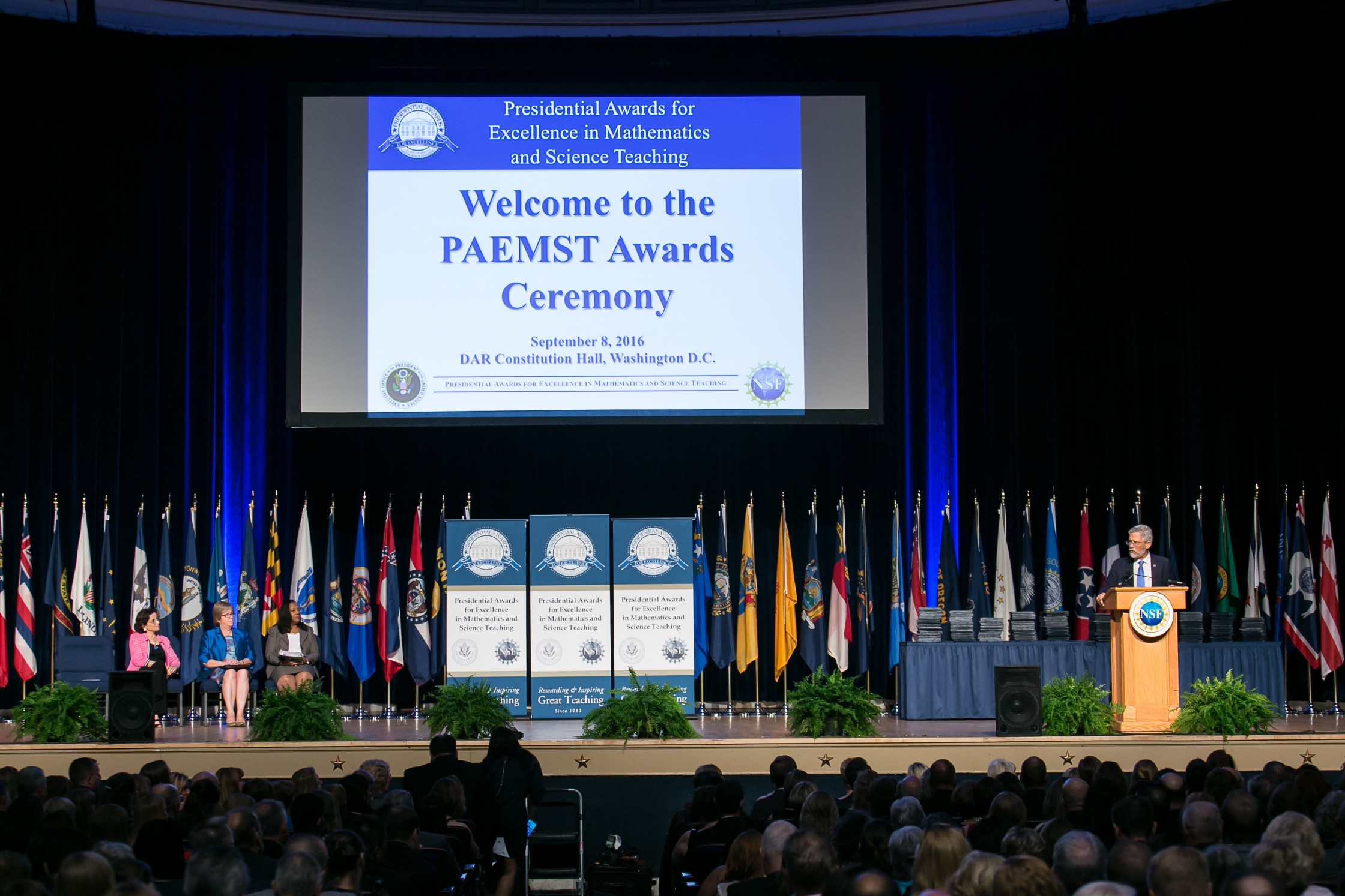
Today the White House honored the 213 newest recipients of the Presidential Awards for Excellence in Mathematics and Science Teaching (PAEMST). Yesterday, these teachers, from all 50 states, the District of Columbia, U.S. Territories, and the Department of Defense Education Activity, received their awards – the Nation’s highest honor for mathematics and science teachers – at a ceremony hosted by the National Science Foundation (NSF) and featuring the President’s Science Advisor, Dr. John Holdren.

In addition, the teachers met with U.S. Chief Technology Officer Megan Smith and Secretary of Energy Ernest Moniz, who congratulated the teachers for their ongoing commitment to supporting students from all background to participate in science, technology, engineering, and math (STEM) learning.
As part of the recognition activities honoring the PAEMST awardees, NSF and the Center for Innovative Research in Cyberlearning hosted an Active Learning in STEM Education Symposium, an event designed to give the teachers the opportunity to engage in activities and discussions with colleagues from across the country, share best practices, and explore ways to use active learning pedagogy in more classrooms nationwide to enable students to engage, think, and solve problems. The awardees were joined by math education innovators to focus part of the day’s conversation on the challenges specifically related to creating a community of math learners. So often, STEM education discussions do not explicitly address challenges in math, even though the mathematics-preparation gap is a known barrier to later success in STEM disciplines, limiting a student’s opportunities at a level below their aspirations.
Building on yesterday’s activities as well as feedback from OSTP’s recent Call to Action on Active Learning, OSTP is excited to announce a nationwide Active Learning Day on October 25. On this day, STEM educators at all grade levels, from K-12 through college and university, are encouraged to spend at least 10 minutes using an active learning technique in their classrooms. Implementing active learning can be as simple as using small group discussions for problem-solving, asking students to write down a question they have following a lesson, or allowing time for self-assessment and reflection by the students; it also can be as expansive as hands-on technology activities or engaging students in authentic scientific research or engineering design. In addition to participation by teachers, faculty, and students in the classroom that day, Active Learning Day will also provide a launching point for educators, administrators, and students to initiate local conversations about how to provide broader support for implementation of active-learning strategies in classrooms through the school year to engage the next generation of scientists, engineers, and innovators.
In response to the Call to Action to incorporate active STEM learning strategies in classrooms, organizations and institutions already have committed to new actions and activities to support students and educators at all grade levels:
K-12 Educator Support
100Kin10, a national network of more than 280 organizations whose goal is to bring 100,000 new, excellent STEM teachers into schools by 2021, will organize all those in its network who prepare and develop K-12 STEM educators in a week of action on active STEM learning.
Higher Education Faculty Support
The American Association of Colleges & Universities (AAC&U) and its Project Kaleidoscope, will organize a national network of STEM faculty at US institutions of higher education who will implement culturally responsive, active STEM learning teaching strategies in their classrooms and coach colleagues on what they might do to implement similar strategies in their classrooms.
Join us on Active Learning Day, or any day throughout the week, and use #ActiveLearningDay to tell us what you’re doing on October 25.
To join in the effort and tell us what new and interesting actions you are doing in response to this important call to action. Please submit this web form by September 23, 2016.
Jo Handelsman is the Associate Director for Science in the White House Office of Science and Technology Policy
Quincy Brown is a Senior Policy Advisor at the White House Office of Science and Technology Policy

